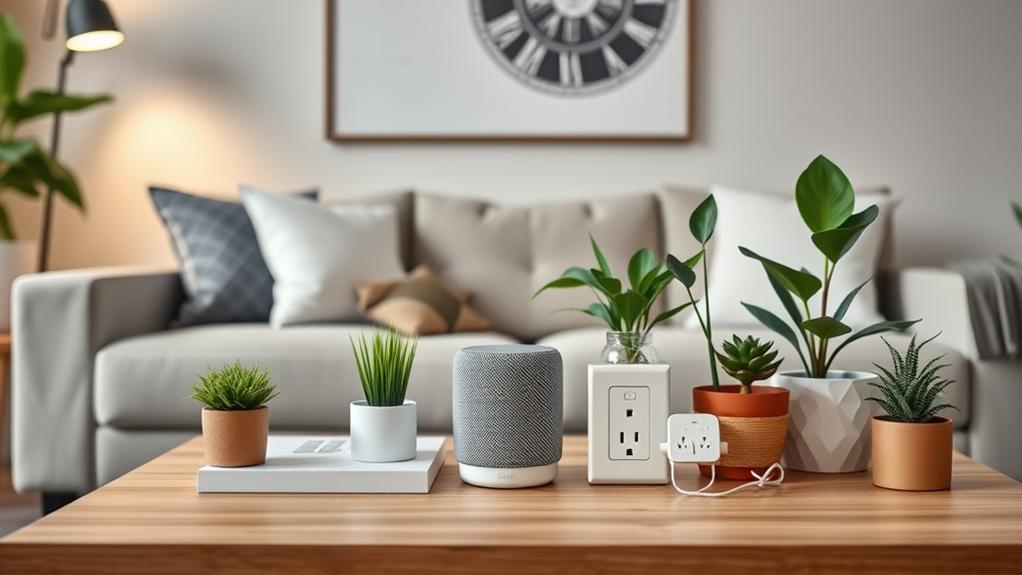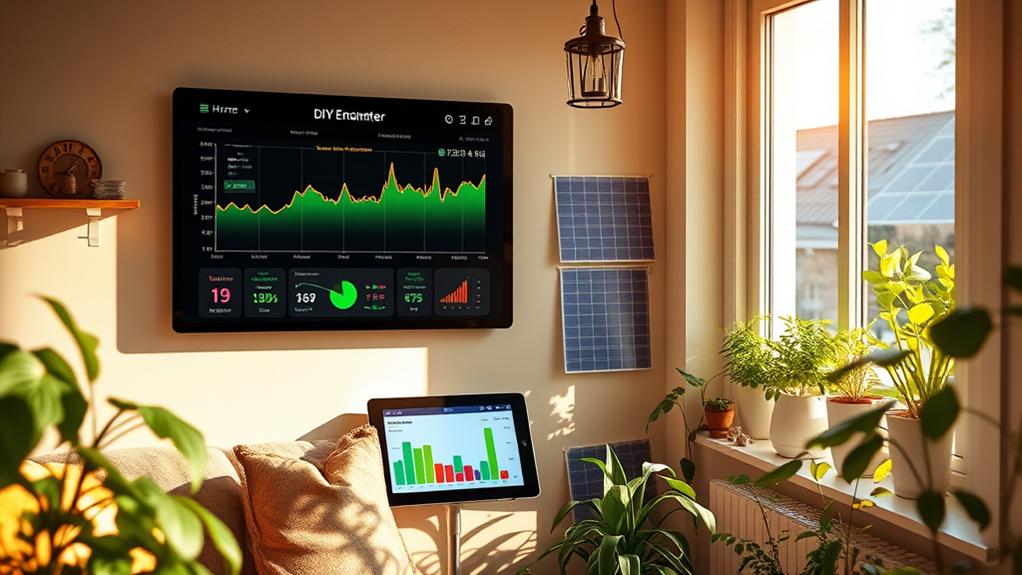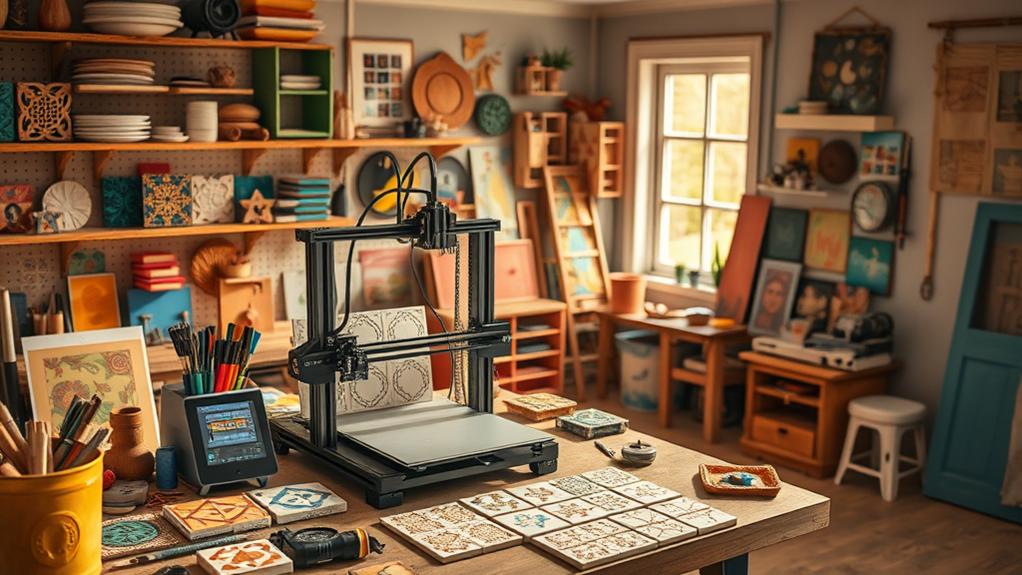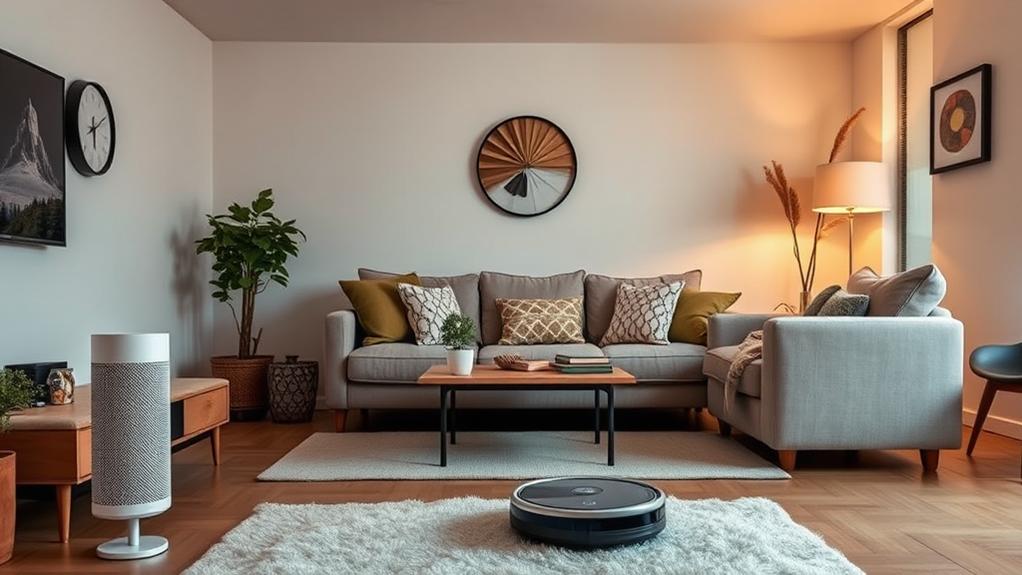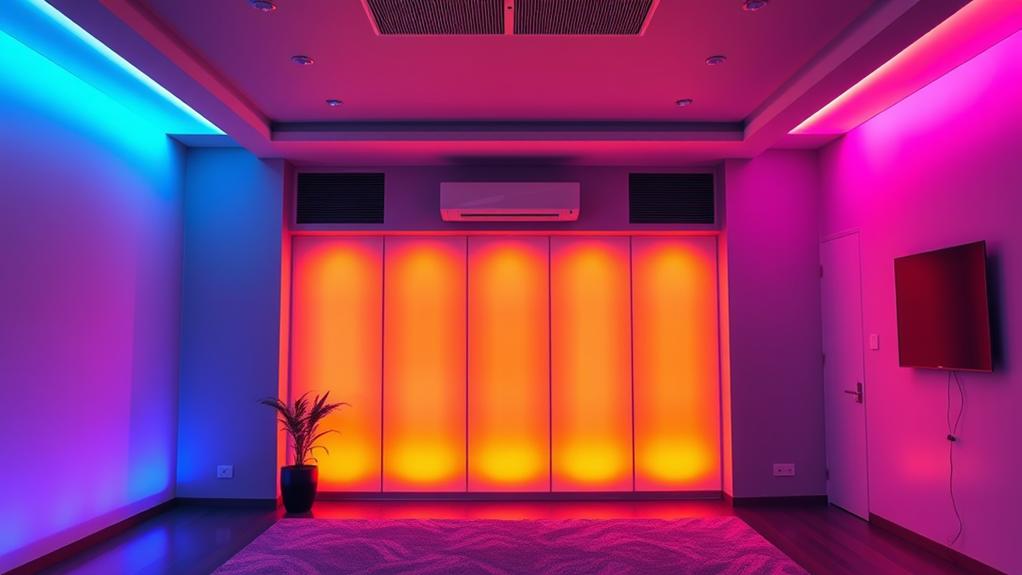You might think that creating a smart home is only for those with deep pockets, but that's not the case. With a few budget-friendly DIY essentials, you can enhance your living space without overspending. Start with smart plugs to monitor energy use, or consider affordable smart bulbs to easily control your lighting. There's also a range of security options that won't strain your budget. Curious about how these essentials can transform your home into a more efficient, connected environment? Let's explore the best options that fit your financial plan and lifestyle.
Smart Plugs for Energy Savings
When it comes to cutting down on energy costs, smart plugs are a game-changer. These handy devices allow you to control your appliances remotely, giving you the power to turn off devices that might otherwise be wasting energy. You can easily plug them into outlets and connect your electronics, from lamps to coffee makers, without any complex installations.
Using a smartphone app, you can schedule when your devices turn on or off. This means you can have your coffee maker brew just before you wake up, and switch off that lamp you forgot about while you're out. You'll not only save energy but also reduce your monthly bills.
Plus, many smart plugs offer energy monitoring features, so you can track which devices consume the most power. This insight helps you make informed decisions about your energy usage.
Installation is simple, and you don't need to be tech-savvy to reap the benefits. Just plug them in, connect to Wi-Fi, and start customizing your energy-saving routine.
With smart plugs, you'll take a significant step toward a more efficient and budget-friendly home.
Affordable Smart Bulbs
Affordable smart bulbs are a fantastic way to enhance your home lighting without breaking the bank. These bulbs give you the ability to control your lighting through your smartphone or voice commands, making it easy to set the perfect mood for any occasion.
You can find smart bulbs at a variety of price points, but many budget-friendly options offer impressive features. Look for bulbs that allow you to adjust brightness and color temperature, so you can customize your space to fit your needs.
Plus, they often work with popular smart home systems like Google Assistant and Amazon Alexa, allowing for seamless integration.
Installation is usually a breeze—just screw in the bulb and connect it to your Wi-Fi network. With a user-friendly app, you can schedule lighting, create scenes, and even control your lights remotely.
This means you can turn them on or off whether you're home or away, adding an extra layer of convenience and security.
DIY Home Security Cameras
Enhancing your home's security can be just as budget-friendly as upgrading your lighting.
DIY home security cameras offer a smart way to keep an eye on your property without breaking the bank. Here are four essential steps to get you started:
- Choose Your Camera: Look for affordable options like Raspberry Pi or old smartphones. They can be repurposed as effective security cameras.
- Install Software: Use free software like MotionEye or iSpy to turn your device into a surveillance system that suits your needs.
- Positioning: Determine the best locations for your cameras, focusing on entry points like doors and windows. Make sure they're out of reach to avoid tampering.
- Storage Solution: Decide how you'll store footage. Cloud services or an external hard drive can keep your recordings safe.
Voice-Controlled Assistants
Voice-controlled assistants can transform your home into a smart living space, making everyday tasks easier and more efficient. With just your voice, you can control lights, play music, set reminders, and even manage your smart appliances. They're versatile tools that simplify your daily routine and offer hands-free convenience.
Here's a quick comparison of popular voice-controlled assistants to help you choose the right one for your needs:
| Assistant | Key Features |
|---|---|
| Amazon Alexa | Smart home integration, skills library, music streaming |
| Google Assistant | Google services integration, voice search, routines |
| Apple Siri | iOS compatibility, HomeKit support, personal assistant features |
| Microsoft Cortana | Windows integration, task management, reminders |
| Samsung Bixby | SmartThings integration, device control, visual search |
When selecting a voice-controlled assistant, consider compatibility with your existing devices and the features that matter most to you. Investing in one of these assistants not only enhances your home automation experience but also adds a layer of convenience that you'll appreciate every day. Start exploring your options today!
Smart Thermostats on a Budget
When it comes to managing your home's temperature efficiently, smart thermostats offer an excellent solution without breaking the bank.
These devices not only enhance comfort but can also help you save on energy bills.
Here's what you should consider when choosing a budget-friendly smart thermostat:
- Compatibility: Make sure the thermostat works with your heating and cooling system. Some models aren't compatible with certain systems, so check before you buy.
- Wi-Fi Connectivity: Look for a thermostat that connects to Wi-Fi, allowing you to control it from your smartphone or tablet. This feature is essential for remote temperature adjustments.
- Learning Capability: Some affordable models can learn your habits over time, adjusting settings automatically to optimize energy usage. This feature can lead to more savings.
- User-Friendly Interface: Choose a thermostat with an easy-to-navigate app and clear display. A simple setup process will make your experience more enjoyable.
Wireless Doorbell Systems
Convenience is a key benefit of wireless doorbell systems, making it easier than ever to stay connected with visitors at your home. Unlike traditional wired systems, wireless doorbells eliminate the need for complicated installations. You can set one up in just a few minutes—simply mount the button outside and plug in the receiver inside.
These systems often come with features like two-way audio and video capabilities, allowing you to chat with guests or delivery drivers right from your smartphone. You won't have to rush to the door when you hear a ring; you can respond at your convenience.
Most wireless doorbells also offer customizable chimes, so you can choose sounds that suit your style. Plus, many models have built-in motion sensors, alerting you when someone approaches, even if they don't press the button. This added layer of security means you'll know when someone's nearby, whether it's a friend, neighbor, or an unexpected visitor.
Wireless doorbell systems are generally budget-friendly and provide a great way to enhance your home's security and convenience without breaking the bank. Investing in one can truly elevate your home automation experience.
Motion Sensors for Automation
Motion sensors are a fantastic addition to any home automation setup, complementing systems like wireless doorbells by enhancing security and convenience further.
They can detect movement and trigger actions in your smart home, making your life easier and safer. Here are four ways you can utilize motion sensors:
- Security Alerts: Set up motion sensors to send you instant notifications when someone enters your property. This acts as a great deterrent for potential intruders.
- Automated Lighting: Use motion sensors to turn on lights when you enter a room. No more fumbling for switches in the dark!
- Energy Savings: Program sensors to turn off lights or appliances when a room is unoccupied, reducing unnecessary energy consumption.
- Smart Home Integration: Connect your sensors to other smart devices. For example, when motion is detected, you could trigger your camera system or adjust your thermostat.
Incorporating motion sensors into your home automation can streamline your daily routines while enhancing security.
They're affordable, easy to install, and offer a significant return on investment regarding comfort and peace of mind.
Smart Light Switches
As evening falls, smart light switches can transform your home into a more efficient and user-friendly space.
These devices let you control your lighting from anywhere, whether you're lounging on the couch or out running errands. You can easily turn lights on or off with your smartphone, schedule them to turn on at specific times, or even adjust brightness levels.
Installing smart light switches is a straightforward DIY project. Most models fit into standard electrical boxes, making it easy to replace your existing switches. Just make sure you follow safety precautions, like turning off the power at the circuit breaker.
Once installed, you'll enjoy the convenience of voice control if you integrate them with a smart assistant.
Beyond convenience, smart light switches can also help you save on energy costs. You can program your lights to turn off automatically when you leave a room, ensuring you're not wasting electricity.
Additionally, many models allow you to set lighting scenes, creating the perfect ambiance for movie nights or dinner parties.
Embracing smart light switches can enhance your home's comfort, efficiency, and security—all without breaking the bank.
Home Automation Hubs
Home automation hubs often serve as the central command for your smart devices, streamlining your home's connectivity and control. By integrating various technologies, these hubs simplify management and enhance efficiency across your devices.
Here's why you should consider investing in one:
- Centralized Control: You can manage multiple devices from a single app, reducing the hassle of switching between different platforms.
- Enhanced Compatibility: Many hubs support a range of protocols, allowing you to connect devices from different brands without a hitch.
- Automation Options: You can create routines or schedules that trigger multiple devices simultaneously, making your home smarter and more responsive.
- Future-Proofing: As technology evolves, a good hub can adapt to new devices and standards, ensuring your system remains up-to-date.
Choosing the right hub can make a significant difference in your home automation experience.
Look for budget-friendly options that provide the features you need without breaking the bank.
With the right hub, you'll enjoy seamless control over your smart home, making everyday tasks simpler and more efficient.
Budget-Friendly Smart Sensors
Smart sensors are essential components for any budget-friendly home automation setup. They help you monitor and control various aspects of your home, enhancing security and energy efficiency without breaking the bank. You can find affordable options like motion sensors, door/window sensors, and temperature sensors that integrate seamlessly with your existing devices.
When choosing smart sensors, look for those that are compatible with your home automation hub. Many budget-friendly sensors connect via Wi-Fi or Zigbee, making it easy to create a cohesive system. Brands like Aqara, Wyze, and Sonoff offer reliable sensors at a fraction of the cost of premium brands.
Installing these sensors is usually a simple DIY task. Most come with clear instructions, allowing you to set them up in minutes.
Once installed, you'll receive real-time alerts and be able to automate actions, like turning on lights when motion is detected or adjusting your thermostat based on temperature readings.
Conclusion
To sum up, by embracing these budget-friendly basics, you can effortlessly elevate your home into a smart sanctuary. Simple switches, savvy sensors, and smart plugs pave the way for a more sustainable, secure, and synchronized living space. So, don't hesitate—dive into DIY home automation and discover the delightful difference it can make in your daily life. With a little creativity and clever choices, you'll transform your home into a tech-savvy treasure without breaking the bank!







